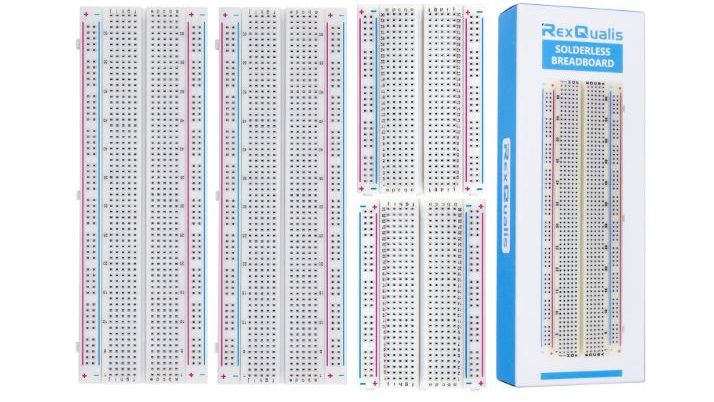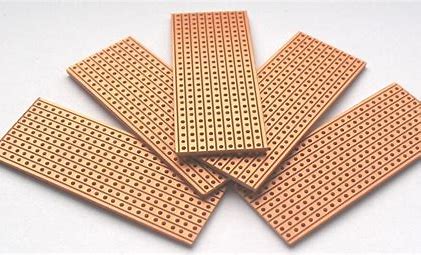In circuit prototyping, we make a circuit on a breadboard to verify the simulation results. Breadboard prototyping is solderless giving us the opportunity to make changes if required, also we can reuse the same resource for later projects.
On the other hand, PCB prototyping is done using a Veroboard. In this case, we solder components to the Veroboard. Prototypes made through this method are permanent and are hard to make changes if needed.
Hay! I am Abbas. If the above short introduction has got your attention. Then I am pretty positive you will enjoy the rest of the article as well.
In the rest of the article, I talk in detail about what is breadboard and veroboard. What makes them unique and what are the main differences between breadboard and verobaord, and much more.
I am not perfect, nor this article is going to be. This is just my limited knowledge try to help you somehow.
I hope you will enjoy it.
What is Breadboard
A breadboard is a tool we use all the time when making any circuit prototype. It is like a go-to tool when it comes to building physical circuits.
A proper definition would sound like the below:
A breadboard is a very basic tool in electronics used to make circuit prototypes, test out circuits, compare the real-time results to simulation one, build a part of a system, and test it independently.
All I am trying to say is that a breadboard is an essential circuit marking tool with many advantages (which will see in this article).

Every breadboard has rows and columns. We put our components in these rows and columns, depending on our design.
Also, we connect various components through connecting wires. In the end, we have a working prototype of a circuit (if everything goes the precise way it is supposed to be).
What is Veroboard
A veroboard is a fundamental tool when it comes to PCB prototyping. It is mostly used by students and beginner level electronics enthusiasts.

It has copper traces and comes in various shapes and sizes. Other than size, veroboards have two special categories:
- Shorted copper strip board
- Open copper strip board
Both the boards have their own applications, but they serve a common purpose, i.e., to make clean PCB prototypes.
Breadboard & Veroboard Differences
Now that we have a basic idea of what breadboard and veroboard are, I think it would be easier to understand their differences.
Let’s talk about some breadboard and veroboard differences.
1. User Friendliness
Well, if you see yourself. You will find that breadboard is more user friendly than veroboard. You don’t need another tool to handle the breadboard, but you will do need some hand tools to work properly with veroboards.
2. Solderless Approach
Breadboard works on a solderless approach which means you connect the circuit components according to your need without permanently soldering them together. We can say a breadboard is a solderless circuit making and testing device.
But the goal of Veroboard is to make PCB, so I am not saying Veroboard is not good. I am just telling the difference here just for the sake of knowledge.
3. Reusability
In veroboard with soldering the components decrease the chances of reusing those components for other projects. While in the breadboard we can take off the components and save them for later projects.
You can reuse Veroboard component as well. But you have to do the desoldering operation first. The point is reusing the same component is quite easy in case of breadboard as compared to veroboard.
4. Parasitic Losses
Parasitic losses are those losses that we encounter due to resistance, capacitance, and inductance. These losses appear at high frequency. Breadboard dots are able to create more of these parasitic losses as compared to veroboards.
So at high frequency, breadboard may not provide you the best results possible, and you need to go for PSC prototype instead.
5. Error Compensation Capability
You made your circuit on simulation software, seems to work fine in the software. Great! Now, it is the time to actually make it on something, the breadboard, and of course who says you won’t make any mistake? You will, and you will make a lot.
The point I am making here, in practice, there are chances of making good mistakes. And Breadboard is the only guy there who can actually be very helpful to undo your mistakes.
While errors made on Veroboard are hard to undo. Because you have to resolder the wrong connection and then solder them back. This increases the chances of burning up a component.
6. Operations
Using a breadboard is easy. To work with veroboard you need to have a decent in fact a high quality soldering and desoldering stations. These stations are quite expensive. Other than these stations you would be required to have hand tools, magnification systems, and much more.
On the other hand, breadboard operation is very simple and less prone to human errors than the veroboard.
With Veroboard you have to make a clean and decent connection else your end circuit may not look good and not work at the optimized conditions. While in the breadboard you don’t need to worry about connection issues.
7. Cost effectiveness
You can use a breadboard for as many projects as you need. But once you use a Veroboard it is really hard to reuse it for another project. That makes them costly in the long run. But it is the point to worry as these boards are not pricey.
Conclusion
Breadboard and verobaord are both basic and fundamental tools when it comes to electronic circuits. We use a breadboard for circuit prototyping and use verobaord for the PCB prototyping.
Both have their advantages and drawbacks. Breadboard uses a solderless approach that makes it user friendly and reusable.
While with Veroboard we make clean PCBs to verify results before taking the next manufacturing step. With Veroboard, we have to be very careful as it is hard to make changes with boards. However, they provide less parasitic losses when compared to breadboards.
In summary, the difference between breadboard and verobaord is that we use one for circuit prototyping and the other for PCB prototyping. It is not like which one is better. It totally depends on what you want to design, i.e., the design goal.
So that is all I want to share with you. I hope you enjoyed it.
Thank you and have a grateful life.
Other useful posts:
- Breadboard basics for beginners – A short course
- Easy Get Started with Electronics (Step by Step Guide)
- Basic electronics for beginners (Easy to follow guide)
- Potentiometer pins configuration
- What is Circuit Prototyping & why it is so important
